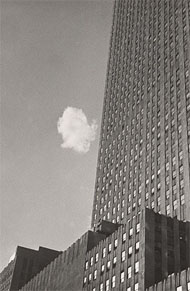 |
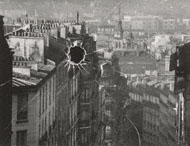
 |
 |
Broken Plate, Paris, negative, 1929; print, 1970s
© Estate of André Kertész
|
 |
 |
|
 |
|
American photographer André Kertész is one of the most original photographers of the 20th century, often creating unexpected compositions from everyday subjects. Born in Budapest in 1894, he made his first photographs in 1912. In 1925 he moved to Paris where he established himself as an artist-photographer and his signature style evolved. In 1936, at the age of 42, he emigrated to the United States and settled in New York, where for more than 20 years he created picture essays for various popular magazines. Kertész retired from commercial work in 1962 and turned his camera once again to the commonplace objects and situations that had always been his favorite subjects.
This exhibition touches upon the extraordinary range of subjects captured by Kertész in a career that spanned 70 years. It consists chiefly of rare prints made about the same time as the negatives, a particular strength of the Getty Museum's Kertész holdings. In 1929 Kertész surveyed the view from his Montmartre window in Paris to make the exposure seen in the image above. When he moved to New York in 1936 he left the negative behind with friends. In 1963, the negative, now damaged, was returned to Kertész. He printed the image, moved by the idea that an accident could present such a beautiful effect.
|
 |
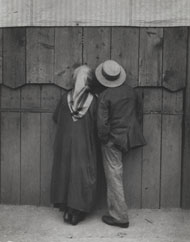
 |
 |
The Circus, Budapest, negative, 1920; print, 1970s
© Estate of André Kertész
|
 |
 |
Kertész was born in Budapest, the second of three sons in a middle-class Jewish Hungarian family. Starting in 1912, he made his first photographs in his spare time while working as a clerk at the Budapest stock exchange. As Kertész later recalled, his camera became "a little notebook, a sketchbook. I photographed things that surrounded me—human things, animals, my home, the shadows, peasants, the life around me."
Here the composition is less about the seen than the unseen. Kertész captured a couple peeking at concealed circus performers through cracks in a wooden fence; the man appears to have just one leg. While reviewing a portfolio of his early work, Kertész stated, "I photographed real life—not the way it was, but the way I felt it. This is the most important thing: not analyzing, but feeling."
|
 |
 |
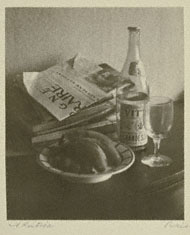
 |
 |
Still Life, Paris, 1926
© Estate of André Kertész
|
 |
In the early 1920s Kertész became restless in Budapest and craved broader artistic opportunities. After three of his photographs were accepted into an important Budapest exhibition, he moved to Paris in October 1925 and registered his profession as "photo reporter." There he continued his practice of wandering the streets, photographing the world around him. In Paris, Kertész began exhibiting his work and embraced Modernist approaches to photography.
By 1926 Kertész was acutely conscious of the visual arts beyond photography. He became engaged with still lifes, a subject favored by contemporary painters and one he would explore over the course of his career. In this still life Kertész focused on the careful arrangement of a Hungarian newspaper, a bowl of overripe bananas, a wine glass, and a half-full bottle of mineral water.
|
 |
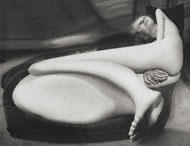
 |
 |
Distortion Number 40, Paris, 1933
© Estate of André Kertész
|
 |
 |
|
|
 |
In 1933 Kertész was asked by the publisher Querelle to contribute nude photographs to the men's magazine Le Sourire (The Smile). Since the war he had been interested in the optical distortions created by water or the chromium-plate housings of auto lamps.
For this project he used three mirrors and a camera designed to expose 9-by-12-centimeter negatives fitted with an early zoom lens. "Sometimes, just by a half-a-step left or right, all the shapes and forms have changed. I viewed the changes and stopped whenever I liked the combination of distorted body shapes," Kertész recalled.
|
 |
|
In 1936 the Nazi regime was gaining strength and moving across Europe. Kertész left Paris for New York, where he was offered a job with Keystone Press Agency and where he would live for the rest of his life.
Soon after arriving in New York, Kertész spent time prowling the streets looking for fresh subjects, just as he had done in Paris. One afternoon he observed a solitary white cloud lost in a huge blue sky, dwarfed by the monolithic presence of the Rockefeller Center. Kertész said that the cloud represented himself and how he felt as a newly arrived immigrant—something subject to the prevailing winds.
|
 |




